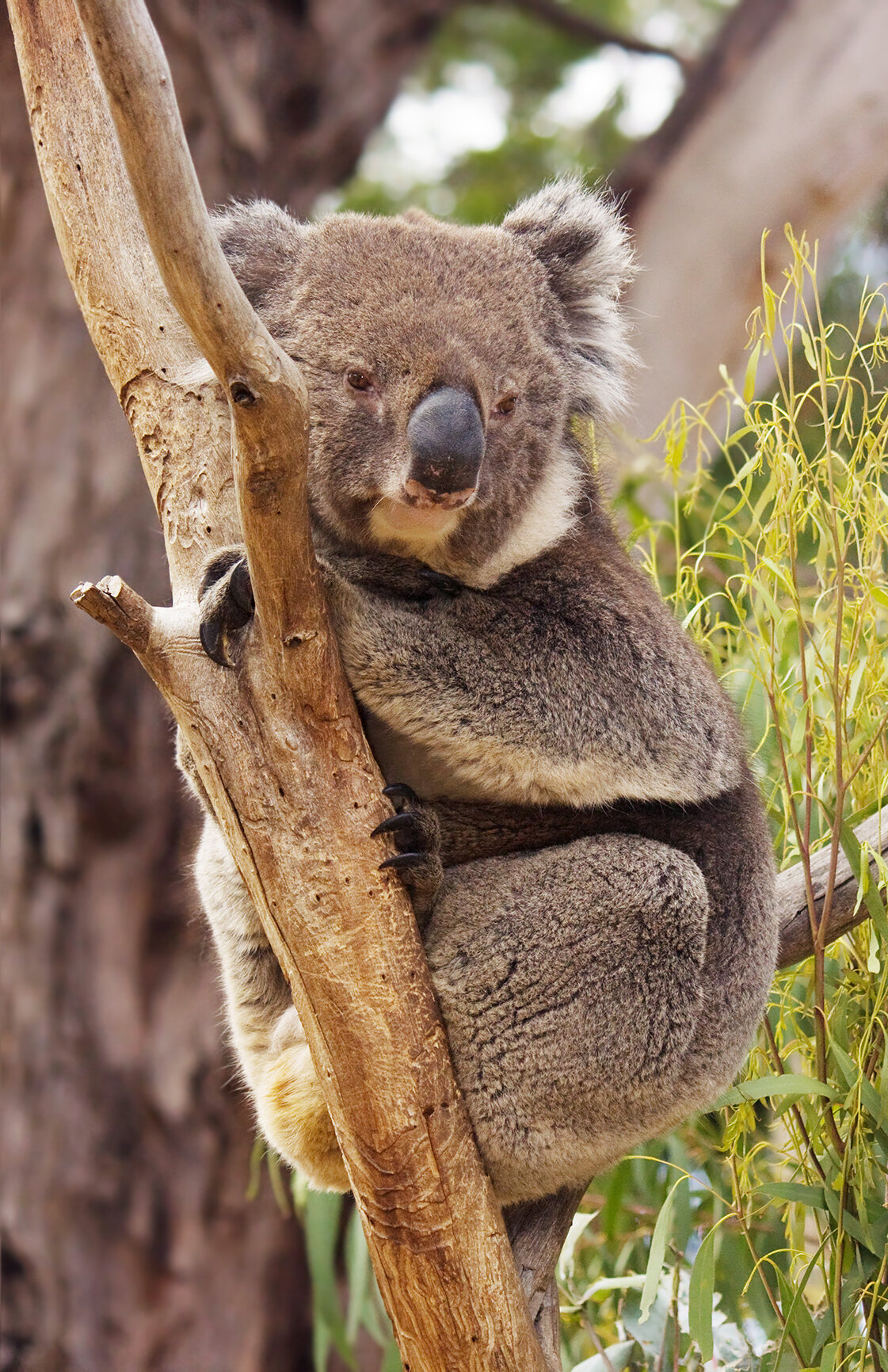
This week, we looked at the swirling chaos around supermassive black holes, anthropogenic climate effects over the Atlantic ocean and the threats to koala bears.
Prediction shaky
Researchers based in the United States and the Netherlands report that they can predict the motion of 27 stars chaotically orbiting Sagittarius A*, the black hole at the center of the Milky Way, over only 462 years before prediction confidence plummets, an “astonishingly short” period. Via a computer program they developed in 2018, it is possible to predict with confidence the movements of solar system objects for 12 million years.
The reasons for the shorter horizon at Sag A* include the fact that the area around the black hole is populated with stellar-mass objects rather than the relatively light and portable planetary bodies of the solar system. But the system around Sag A* is also “30,000 times more chaotic,” according to the researchers, because when two or three stars approach each other closely, their mutual gravitational shoving leads to variations in their orbits, which also push on the black hole, thereby affecting all 27 stars in the cluster.
It’s a hardcore stellar mosh pit, by contrast with the solar system’s Jane Austen-like cotillion of stately English country dancing.
Emissions disadvantageous
At this point, it’s basically assumed by everyone that changes in climate and weather patterns are human induced. But scientists at the University Miami Rosenstiel School of Marine, Atmospheric, and Earth Science recently drove the point home (again) with a grand ensemble simulation technique that combined the averages of 400 worldwide climate model simulations to demonstrate that climate change is a result of external forcing by two primary antagonists: (1) humans and (2) volcanoes.
Based on the results of the simulation, the researchers suggest that in the years after World War II, human aerosol emissions suppressed hurricane activity in the Atlantic and produced a drier Sahel desert in West Africa. Aerosol emission decreases in the 1980s correspond with heightened hurricane activity and more rainfall in the Sahel.
Chengfei He, a postdoctoral researcher at the Rosenstiel School, said, “Due to the continuous reduction in human-induced aerosol emissions around the Atlantic, along with ongoing and future warming due to greenhouse gases, we suggest there will not likely be a return to the quiet period in hurricane activity in the Atlantic in the decades of the mid-century.”
Therapeutic desirable
The prognosis for glioblastoma, an aggressive form of brain cancer, is exceedingly grim. The five-year survival rate currently stands at 6.8%. Multidisciplinary researchers at the University of Nottingham in the U.K. now report an approach—still years from human trial—that represents the first quantum therapeutic for glioblastoma.
They developed what they’re calling bio-nanoantennae, gold nanoparticles functionalized with electron acceptor-donor species. Remote electrical stimulation regulated electron transport between the acceptor-donor species selectively; in experiments in vitro, modulating the electron transport triggered apoptosis (cell death) in glioblastoma cells, leaving healthy cells unharmed.
Marsupial imperiled
Koala bears, easily ranking in the top three most charismatic animals on the planet, tend to receive more public attention and research than less invitingly huggable threatened species, such as the Chinese sturgeon. Just look at this poor guy. Yeah, yeah, I know we should focus more attention on key species that were not gifted with a resemblance to human babies, but I’m not made of stone, people, here’s a story about koala bears and their troubles.
Researchers at the University of Queensland School of Veterinary Science analyzed KoalaBASE data to determine the most frequent causes of koala bear death in southeast Queensland, Australia: cars (52%), chlamydia (34%) and dog attacks (14%). The study spanned a five-year period from 2009 to 2014. The researchers hope their findings can help policymakers to create interventions to reduce koala deaths so we can focus more attention on less adorable endangered species.
© 2023 Science X Network
Citation:
Saturday Citations: Wear a helmet around supermassive black holes. Also, cute koala bears and quantum therapy for cancer (2023, September 16)
retrieved 16 September 2023
from https://phys.org/news/2023-09-saturday-citations-helmet-supermassive-black.html
This document is subject to copyright. Apart from any fair dealing for the purpose of private study or research, no
part may be reproduced without the written permission. The content is provided for information purposes only.
Denial of responsibility! TechCodex is an automatic aggregator of the all world’s media. In each content, the hyperlink to the primary source is specified. All trademarks belong to their rightful owners, and all materials to their authors. For any complaint, please reach us at – [email protected]. We will take necessary action within 24 hours.

Jessica Irvine is a tech enthusiast specializing in gadgets. From smart home devices to cutting-edge electronics, Jessica explores the world of consumer tech, offering readers comprehensive reviews, hands-on experiences, and expert insights into the coolest and most innovative gadgets on the market.

